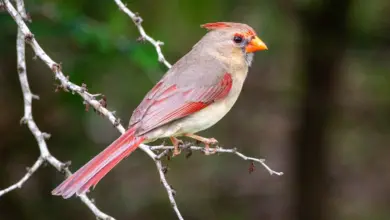Southern White-faced Owl
The Southern White-faced Owls (Ptilopsis grant) was formerly regarded as a subspecies of the Northern White-faced Owl (P. leucopsis) but the two are now commonly treated as separate species.
Distribution / Range
The range of the Southern White-faced Owl is restricted to the southern half of Africa, extending from Gabon eastwards to southern Kenya and southwards to Namibia and northern South Africa.
It inhabits savanna and dry woodland. It is usually seen alone or in pairs.
Description
It is 22-28 centimetres long and weighs 185-220 grams.
The upperparts are grey with dark streaks and there are white spots on the scapular feathers. The underparts are whitish with dark streaks. The head has two short “ear” tufts with black tips. The face is white with a black border and black around the large orange eyes.
Juvenile birds have greyish faces.
Similar Species Id: The Southern White and Northern White-faced Owl look alike, except the Northern White-faced Owl is usually paler and browner with reduced streaking below.
Calls / Vocalizations
The call is a series of fast, bubbling hoots. It is uttered at night and frequently repeated. The Northern White-faced Owl has a very different two-note call.
Nesting / Breeding
The eggs are usually laid in the old nest of another bird.
The clutch contains two or three eggs which are incubated for about 30 days.
The young birds leave the nest about a month after hatching.
Diet / Feeding
Their diet consists of large invertebrates as well as some small mammals, birds, and reptiles.
More Owl Information
- Owl Information
- Index of Owl Species with Pictures
- Owl Eyes / Vision Adaptations
- Pygmy Owls
- Barn Owls
- Horned Owls
- Scops Owls





